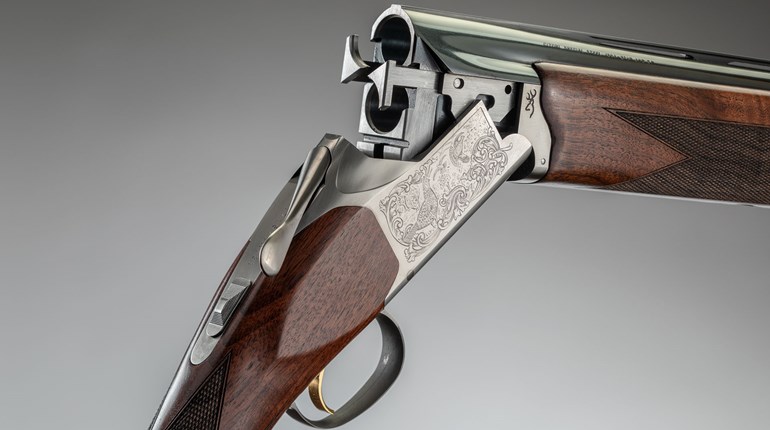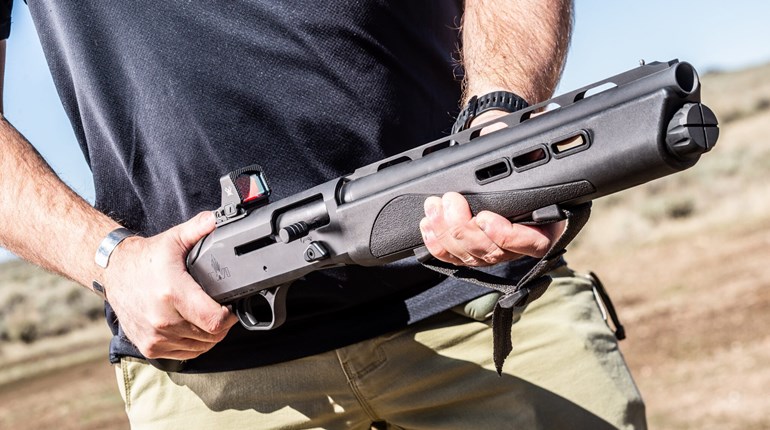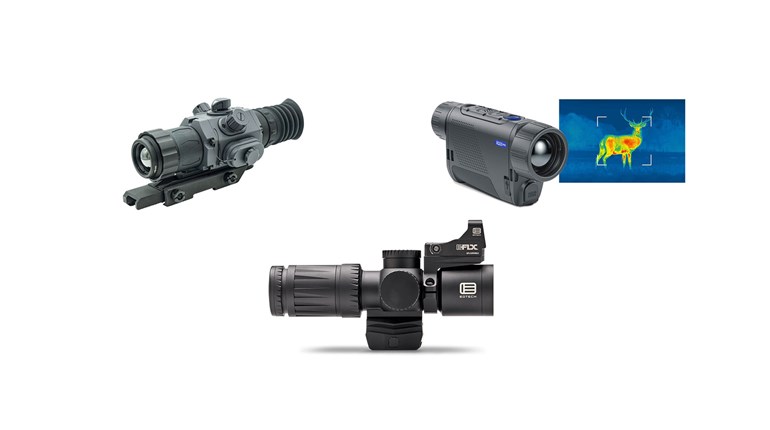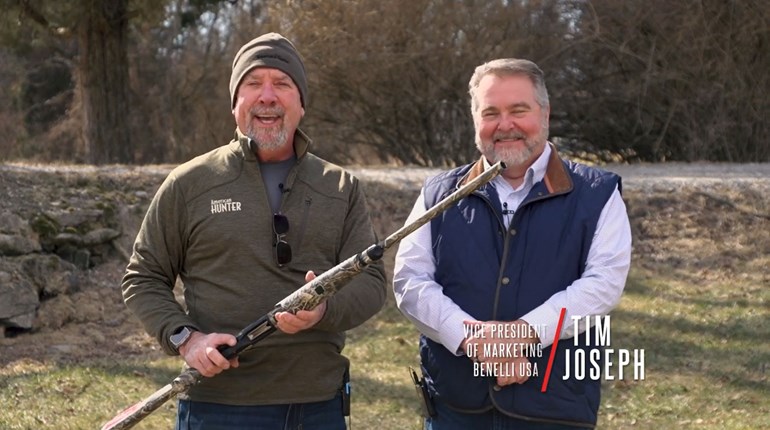
I’ve always thought Autumn the perfect name for a hunting dog. Fabarm thinks it’s just as good for a shotgun. Great minds think alike.
The new Autumn 3-inch 20-gauge side-by-side double from Fabarm is the kind of classy upland gun that defined American bird-hunting guns from the 1880s until World War II. Brands like Parker, Fox, Lefever and L.C. Smith owned the U.S. market. Light, lively, balanced and dependably rugged. The two fastest shots in the uplands. Pair one of those side-by-sides with a sleek Irish setter and you were ready for quail, grouse, pheasant, partridge and a slice of American paradise in the autumn uplands.

Alas, pumps, autoloaders and the economy of machine production priced our doubles out of the market. Can Fabarm reprise the American side-by-side—even if it’s made in Italy? You be the judge.
First, disabuse yourself of any ideas of inexperienced, shoddy production. The Gardone Val Trompia region of Brescia in northern Italy has a rich tradition of shotgun making. Think Perazzi, Beretta, Rizzini, Fausti, Caesar Guerini. Fabarm itself has been hard at it since 1900, and the Autumn stands as testament to that tradition. In fact, while some Italian makers are farming out parts production to countries with lower wages, Fabarm reportedly and proudly makes and assembles every part of the Autumn in Italy.
What connects this gun with America is not just its craftsmanship, but its genesis in the imagination of Wes Lang, head honcho at Fabarm USA. Lang, like many double-gun aficionados, longed for the classic look, balance, function and durability of America’s old side-by-sides. As more than one shotgunner has said, “God didn’t mount our eyes one atop the other!”

The 6-pound Autumn’s foundation is a strong, rounded boxlock action machined from one solid chunk of steel. No screw heads mar its external surfaces. Instead they are color-casehardened and embellished with ornamental scroll engraving. The engraving continues over the fences, down the tang and atop the opening lever, the sides of which are checkered for good thumb grip. The Fabarm lion logo is inlaid in gold on the trigger bow. The trigger is gold, as is the discreet, inlaid Fabarm name on both sides of the action.
This strong action is fitted to 28-inch monobloc barrels via four under lugs and a tapered locking bar that only gets tighter with wear. The Anson-style pushrod fore-end latch includes a hardened steel insert that contacts the barrel lug. This can be tightened to compensate for wear, too. Fabarm’s long-proven single trigger breaks beautifully at just under 4 pounds, the recoil of the first shot setting the rebounding hammer for the second. A typical sliding tang safety includes a barrel selector for those with the presence of mind to manipulate it. Flush a quail in front of me and it’s all I can do to shove off the safety, concentrate on the bird and shoot.

That simple reaction was more than sufficient during a late pheasant hunt with Fiocchi ammunition at Wings of Thunder preserve near Kimball, S.D. The roosters were surprisingly strong fliers, often flushing well ahead under pressure from the Labradors. Whether the birds erupted underfoot or out at full-choke range, the Autumn seemed to find them as easily as it found my shoulder pocket. Cold and wind on the second day required a choke change. Yes, the Autumn has screw-in chokes within its Tribore HP barrels, and comes with five of Fabarm’s Inner HP long choke tubes. According to Fabarm, Tribore HP barrels are overbored at the forcing cone, gradually tapering forward to reduce recoil and create a Venturi effect. Whether this makes a difference in one’s shooting or the gun’s patterning remains for more extensive testing than I had the time or ammo to conduct. Let’s just say neither I nor those ringnecks had any complaints. The Autumn carried easily, and its selective, auto ejectors kicked empty hulls smartly past my shoulder. Interceptor sears add insurance against doubling.

Fabarm seems to have built this gun with durability in mind. While it weighs in at a nearly ideal 6 pounds, its barrels are safe for steel shot. Indeed, the barrels were reportedly pressure tested by the Italian National proof house to 1,630 BAR (23,641 psi), well beyond the usual standards.
The stock is a nicely figured but understated, dark, matte, hand-oil-finished deluxe Turkish walnut fitted slightly proud to accommodate refinishing sometime down the road. The hand-rubbed wood complements the tastefully engraved, color-casehardened receiver. Length of pull is 14.5 inches ending with a checkered walnut plate that is smooth at the heel for slick mounting. The straight, English grip accommodates virtually any hand size, and sharp, precise checkering wraps over it. The splinter fore-end is similarly checkered across the belly and up both sides. A pistol grip, beavertail fore-end model is reportedly in the works, as well.

So subtle as to be almost unnoticed is the solid, swamped rib. Like the barrels themselves, it is high-temperature soldered for strength, but unlike the deeply blued, shiny barrels, the rib is stippled matte, the lateral, concave swamping along with the gradual taper forward flattening any glare and converging to lead the eye, at least subconsciously, toward the target. While shooting those Dakota pheasants, I never noticed the rib nor its front bead. This, according to an old shotgunning coach, is the way it’s supposed to be; the shotgun becoming almost an extension of one’s arm, rising almost of its own volition to the flush of the bird, the hunter’s eye locking on that target and the gun coming along for the ride until the shot is off and the bird falls.
Taken as a whole, I find the Fabarm Autumn 20-gauge a classy, understated, elegant, upland bird gun and every bit the equal—or better—of America’s classics from the first half of the 20th century.
Technical Specifications
• Type: double barrel, side-by-side shotgun
• Gauge/Chamber: 20/3"
• Barrel: Tribore HP; 28" (tested) or 30"; blued; swamped-style rib; auto-ejectors; interchangeable choke tubes
• Trigger: single, inertia; 4-lb. pull weight
• Sights: front bead
• Safety: tang-mounted w/barrel selector
• Stock: pistol grip or English (tested); deluxe Turkish walnut; hand-oiled, matte finish; length of pull 14.5"; drop at heel 2.25"; drop at comb 1.5"
• Receiver Finish: color-casehardened
• Overall Length: 45.5"
• Weight: 6 lbs.
• Accessories: Integrale gun case, 5 Inner HP choke tubes (C, IC, M, IM, F)
• MSRP: $4,095; fabarmusa.com




































